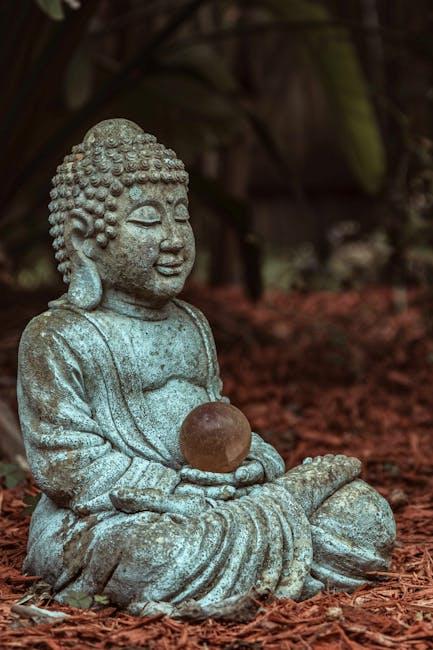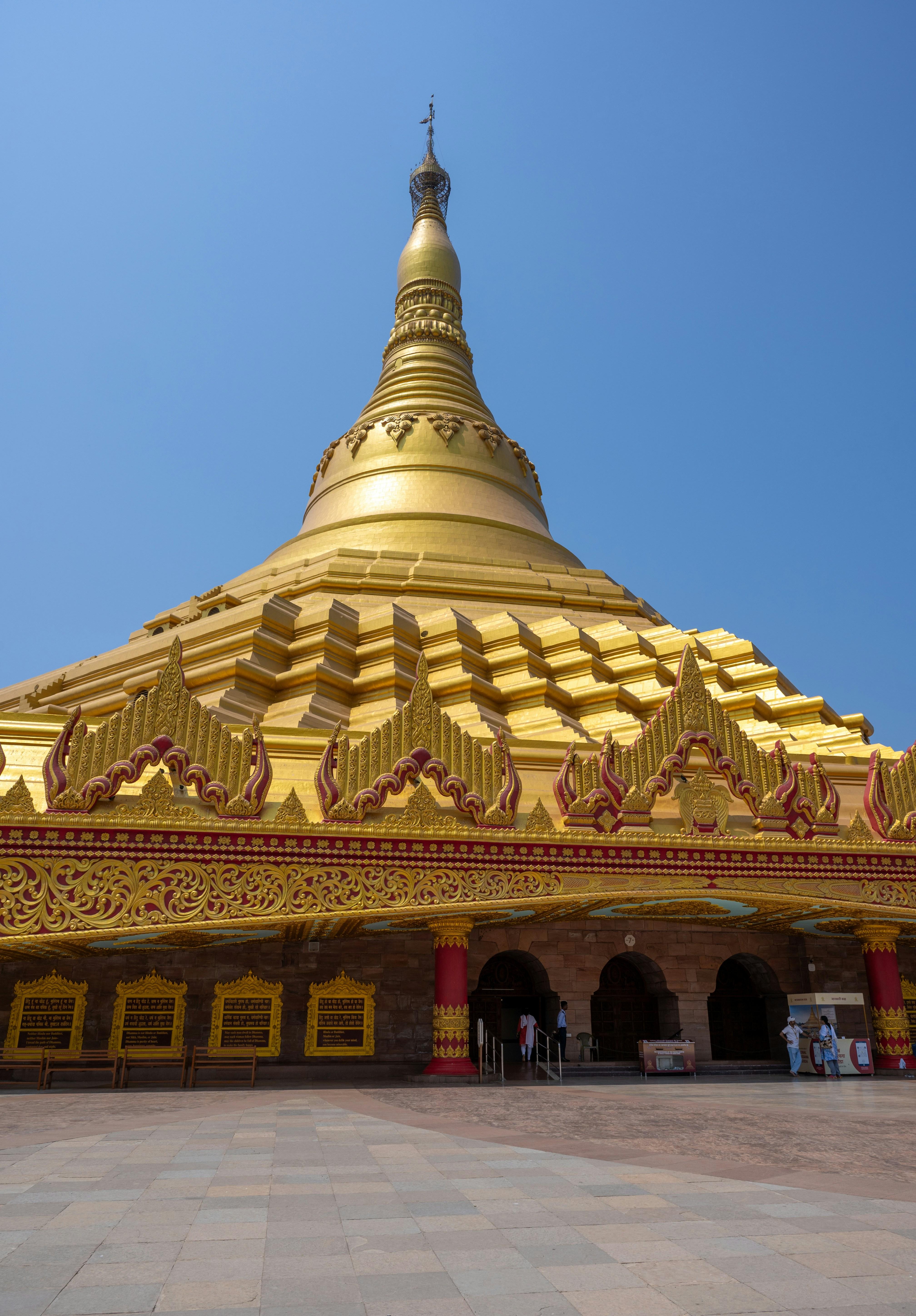In the serene embrace of silence, where the mind journeys inward and time seems to dissolve, lies the ancient practice of Vipassana meditation. As one of the oldest forms of meditation, Vipassana offers a pathway to self-discovery and inner peace, tracing its roots back to the teachings of Siddhartha Gautama, the Buddha, over two millennia ago. This practice, often described as the art of seeing things as they truly are, has woven its way through the tapestry of history, influencing countless lives across diverse cultures and epochs. From the whispers of its origins in the lush landscapes of ancient India to its resurgence in the modern world, the evolution of Vipassana meditation is a tale of spiritual resilience and timeless wisdom. This article embarks on a journey through the ages, exploring the historical development of Vipassana, its philosophical underpinnings, and its enduring relevance in today’s fast-paced world. Join us as we delve into the rich legacy of this transformative practice, uncovering the threads that connect past to present, and the silent revolution that continues to unfold within the hearts of practitioners worldwide.
Origins and Ancient Roots of Vipassana
The profound practice of Vipassana meditation, which has guided countless individuals towards self-discovery and inner peace, finds its origins deeply rooted in the teachings of Siddhartha Gautama, the Buddha, over 2,500 years ago. This ancient practice, known as the art of seeing things as they truly are, was central to the Buddha’s journey of enlightenment. Vipassana, meaning “insight” or “clear seeing,” emerged as a method to cultivate mindfulness and introspection, allowing practitioners to observe the nature of reality through direct experience.
During its formative years, Vipassana was passed down through an oral tradition, safeguarded by monastic communities. As Buddhism spread across Asia, the practice was embraced and adapted by various cultures, contributing to a rich tapestry of meditative traditions. Key elements that have remained integral include:
- Mindfulness of breathing: Observing the breath as an anchor for awareness.
- Observation of sensations: Noting bodily sensations without attachment or aversion.
- Equanimity: Cultivating a balanced and impartial state of mind.
These foundational principles have persisted through centuries, highlighting Vipassana’s timeless relevance and its enduring capacity to illuminate the path towards self-understanding and liberation.

The Spread of Vipassana Across Cultures
Vipassana meditation, originally rooted in the teachings of the Buddha, has seen a remarkable journey from the ancient monastic settings of India to the bustling cities and serene countrysides around the world. This profound practice, emphasizing mindfulness and insight into the nature of reality, has transcended cultural boundaries and has been embraced by diverse communities. Its spread can be attributed to a few key elements:
- Globalization: As travel and communication became easier, spiritual seekers began to explore practices from different cultures, leading to a wider appreciation and adoption of Vipassana.
- Adaptation: Teachers from various backgrounds have tailored Vipassana to fit the cultural context of their students, without diluting its essence. This adaptability has allowed it to resonate with a broader audience.
- Scientific Endorsement: The practice has gained credibility through scientific research highlighting its benefits for mental health, making it appealing to those seeking evidence-based methods for well-being.
These factors have contributed to the universal appeal of Vipassana, allowing it to flourish in a variety of settings from traditional retreat centers to modern wellness programs. As it continues to evolve, Vipassana remains a testament to the enduring power of meditation to cross cultural divides and offer a path to inner peace and clarity.

Modern Interpretations and Practices
In recent years, Vipassana meditation has seen a renaissance as it adapts to contemporary contexts while maintaining its ancient roots. Today, practitioners and teachers around the globe explore new dimensions of this age-old practice, blending traditional teachings with modern insights. Some innovative interpretations include:
- Mindfulness Integration: Many incorporate Vipassana into everyday mindfulness practices, emphasizing awareness in routine activities to foster a deeper connection with the present moment.
- Digital Retreats: With the advent of technology, online platforms offer virtual Vipassana retreats, making the practice accessible to those unable to attend in-person sessions.
- Secular Adaptations: Some practitioners focus on the mental and emotional benefits, framing Vipassana as a tool for personal development without religious overtones.
These modern interpretations reflect a dynamic evolution, illustrating how Vipassana continues to resonate with individuals seeking clarity and tranquility amidst the complexities of modern life.

Incorporating Vipassana into Daily Life
Integrating the ancient practice of Vipassana into the rhythm of everyday life can be a transformative journey. The essence of Vipassana, which means “to see things as they really are,” is mindfulness and awareness, a state that can be cultivated beyond the meditation cushion. Here are some practical ways to weave Vipassana into your daily routine:
- Mindful Breathing: Take a few moments throughout the day to focus on your breath. Whether you’re commuting, waiting in line, or taking a break, a few deep breaths can anchor you in the present moment.
- Conscious Eating: Pay attention to the colors, textures, and flavors of your meals. Eating mindfully not only enhances your enjoyment but also fosters gratitude for the nourishment you receive.
- Intentional Walking: Practice walking meditation by being fully present with each step. Feel the ground beneath your feet and the rhythm of your movement, transforming a routine walk into a meditative experience.
- Emotional Awareness: Notice your emotions without judgment as they arise. Recognize them as transient states, allowing you to respond with clarity rather than react impulsively.
By embedding these simple practices into your daily life, you cultivate a deeper sense of presence and equanimity, reflecting the core principles of Vipassana. This mindful approach not only enriches personal well-being but also enhances your interactions with the world around you.
In Summary
As we draw the curtain on our exploration of the , we find ourselves standing at the crossroads of past and present, where ancient whispers of insight harmonize with the modern pursuit of mindfulness. Through the ages, Vipassana has traversed the landscapes of time, evolving yet steadfast in its essence, offering a mirror to the mind’s intricacies and a lantern for the soul’s journey.
From the dense forests where the Buddha first imparted its teachings to the bustling meditation centers scattered across the globe today, Vipassana remains a testament to the timeless quest for inner peace and clarity. It invites us, regardless of our origins, to embark on a voyage inward, peeling back the layers of our consciousness to reveal the tranquility that lies within.
In this ever-changing world, where the noise of daily life often drowns out the whispers of our inner selves, Vipassana stands as a beacon, a reminder of the profound simplicity that resides in awareness and presence. As we close this chapter, let us carry forward the legacy of Vipassana, not as a relic of the past, but as a living, breathing practice that continues to shape and illuminate the path of countless seekers. And so, the story of Vipassana, ever unfolding, invites each of us to listen, to learn, and to live with a heart wide open.
